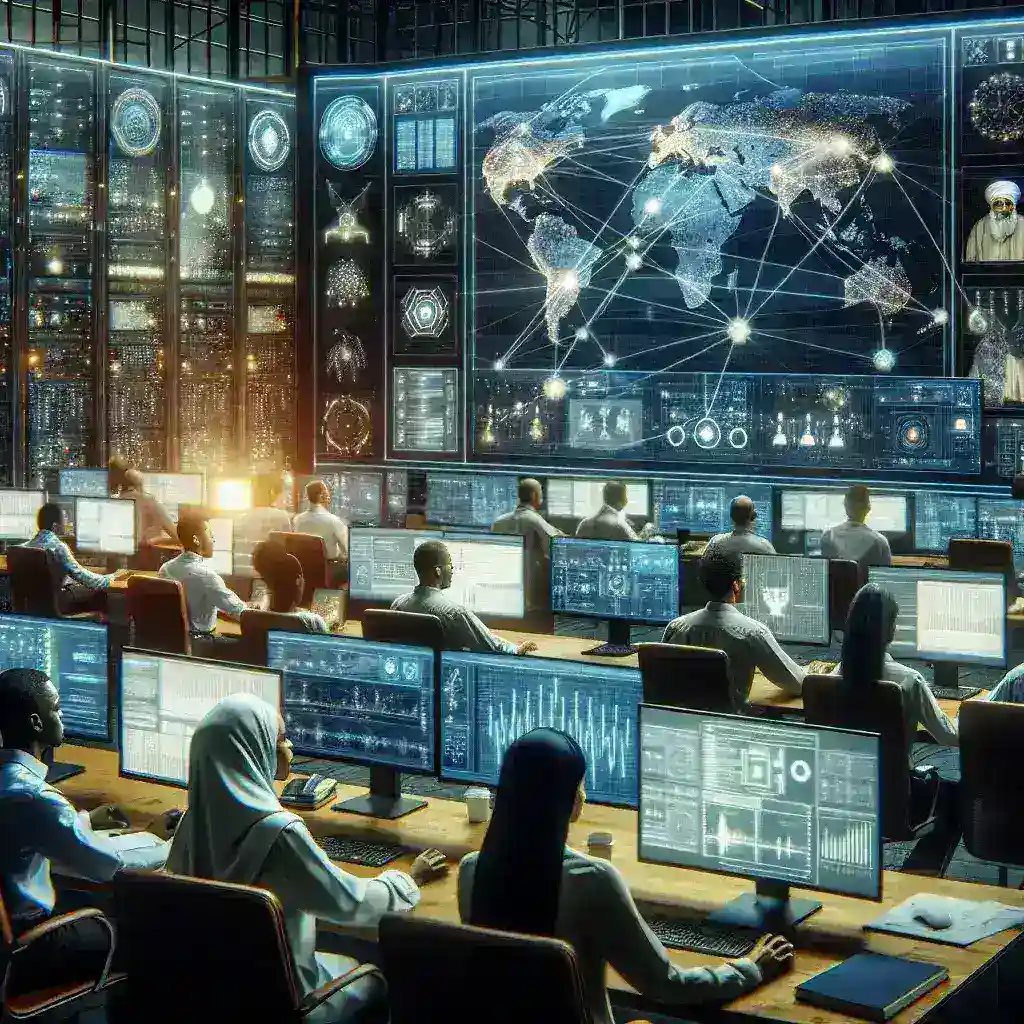Introduction
In an era where cyber threats loom large over critical infrastructure, the Energy Department is taking bold steps to safeguard the national power grid. The newly developed National Grid Cyber Threat Monitoring Hub represents a significant leap forward in the fight against cyber attacks, ensuring the reliability and security of energy systems across the country.
The Need for Enhanced Cybersecurity
The national power grid is a complex and interconnected system that is vital to the functioning of modern society. With the increasing sophistication of cyber threats, it has become imperative to bolster the cybersecurity measures in place. In recent years, various cyber incidents have highlighted vulnerabilities, prompting the Energy Department to act decisively.
Historical Context
Cyber incidents targeting the energy sector are not new. In 2015, a cyber attack on Ukraine’s power grid left over 200,000 residents without electricity for hours. This incident was a wake-up call, illustrating the potential for devastating consequences from cyber threats. As a result, governments worldwide began reevaluating their cybersecurity strategies, with the Energy Department leading the charge in the United States.
What is the National Grid Cyber Threat Monitoring Hub?
The National Grid Cyber Threat Monitoring Hub is designed as a centralized platform that aggregates and analyzes data related to cyber threats affecting the power grid. It aims to provide real-time intelligence and situational awareness to energy sector stakeholders.
Key Features
- Real-Time Monitoring: The hub continuously monitors cyber activity, enabling quick detection and response to threats.
- Data Integration: It integrates data from various sources, including private sector partners and government agencies, enhancing the overall threat landscape awareness.
- Collaboration: Facilitates collaboration among industry experts, government officials, and cybersecurity professionals to share insights and best practices.
- Incident Response: Provides tools and resources to support rapid incident response actions when threats are detected.
The Future of Cybersecurity in Energy
With the creation of the National Grid Cyber Threat Monitoring Hub, the Energy Department is setting a precedent for how cybersecurity can be approached in the energy sector. Experts predict that this initiative will pave the way for other critical infrastructure sectors to develop similar monitoring capabilities.
Future Predictions
As cyber threats continue to evolve, the need for proactive measures will grow. It is expected that the hub will:
- Enhance the resilience of the national power grid, reducing downtime during cyber incidents.
- Enable more robust public-private partnerships, essential for comprehensive cybersecurity strategies.
- Drive innovation in cybersecurity technologies, as the demand for advanced solutions increases.
Pros and Cons of the Monitoring Hub
While the establishment of the National Grid Cyber Threat Monitoring Hub is a positive step forward, it is essential to consider both the advantages and potential challenges:
Pros
- Improved Security: Enhanced monitoring leads to quicker detection and mitigation of threats.
- Informed Decision-Making: Data-driven insights allow for better strategic planning and resource allocation.
- Collaboration: Promotes cooperation among various stakeholders, fostering a culture of shared responsibility for cybersecurity.
Cons
- Resource Intensive: Setting up and maintaining such a hub requires significant investment in technology and human resources.
- Privacy Concerns: The collection and analysis of data may raise concerns about privacy and data security.
- Dependence on Technology: Increased reliance on technology could lead to vulnerabilities if not adequately managed.
Steps to Build a Secure Future
To ensure the success of the National Grid Cyber Threat Monitoring Hub, several steps can be taken:
- Continuous Training: Regular training for cybersecurity professionals to keep them updated on the latest threats and technologies.
- Public Awareness: Increasing public awareness about the importance of cybersecurity in the energy sector.
- Investment in Technology: Allocating resources for cutting-edge technologies that bolster the security infrastructure.
Real Examples of Cyber Threats
Understanding real-world examples of cyber threats can help underscore the necessity of initiatives like the National Grid Cyber Threat Monitoring Hub:
Example 1: Colonial Pipeline Ransomware Attack
In May 2021, the Colonial Pipeline suffered a ransomware attack that led to the temporary shutdown of pipeline operations. This attack disrupted fuel supplies across the East Coast and highlighted the vulnerabilities of critical infrastructure to cyber threats.
Example 2: Targeted Attacks on Utilities
In addition to ransomware attacks, utilities have faced targeted cyber attacks aimed at disrupting services or stealing sensitive information. These incidents emphasize the need for a vigilant cybersecurity posture.
Cultural Relevance of Cybersecurity
As technology becomes increasingly embedded in daily life, the cultural significance of cybersecurity cannot be overstated. The protection of critical infrastructure like the power grid is a national priority, reflecting the broader implications of cybersecurity in safeguarding not only technological assets but also public safety and national security.
Conclusion
The establishment of the National Grid Cyber Threat Monitoring Hub by the Energy Department marks a significant milestone in the ongoing battle against cyber threats. By enhancing the ability to monitor and respond to cyber incidents, the hub plays a crucial role in protecting the nation’s energy infrastructure. As we look to the future, it is clear that continued innovation and collaboration will be essential in maintaining a secure and resilient power grid.

